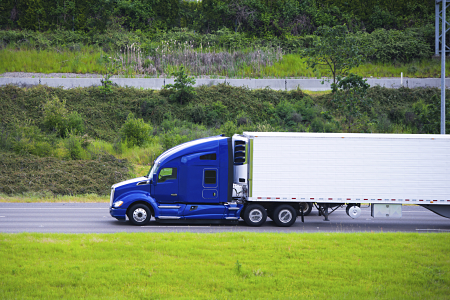Trucking industry looks to polish its image
Facing a national shortage of 30,000 drivers and truckload of negative public perceptions, the American trucking industry realizes it has to polish its image.
With that in mind, trucking industry companies have launched the “Trucking Moves America Forward” campaign.
“The goal of this movement is simple — to effectively relay the essential nature of the trucking industry to the nation’s economy and the everyday lives of all Americans,” said John Conklin, president of the Allied Committee for Transportation (ACT 1), which seeded the campaign called Trucking Moves America Forward with a $100,000 donation.
Conklin said the goal of the campaign is to raise $1 million a year over the next five years.
The campaign’s fundraising chairman is Michael Card, who served as the American Trucking Associations (ATA) chairman the past year.
“One of the focuses of my year as ATA chairman was to raise the image and strength in the clout of ATA and the trucking industry,” Card said, noting that trucking moves 70 percent of the freight in America.
Card admitted the campaign starts with a big drawback in how the industry is perceived by the general public, a perception he realized especially during his chairmanship.
“We weren’t knights of the road, we were really in the way,” Card said. “So when I heard of ACT 1’s proposal to start an image campaign I was thrilled.”
The initial phase of the campaign is the launch of a website at www.TruckingMovesAmerica.com where creative materials, messaging and social media links are available to all elements of the trucking industry as well as the general public.
The full roll-out of the campaign will be launched at the Mid-America Trucking Show in Louisville next March.
“We want to reach policy makers at the state and federal levels as well as grass roots supporters throughout the nation and also the general public who may not know much about the trucking industry,” said Conklin. “We also want to reach out to those who dislike the trucking industry today to share our message about the kind of trucks on the road today — trucks that are safe, reliable, efficient, environmentally conscious and technologically advanced. At last, but most importantly, it’s to tell our individual stories of what trucking has meant to us, our families, our businesses and our lives.”
Card envisions an industry-wide campaign involving everyone from drivers to company executives to companies that are affiliated with the trucking industry.
ACT 1 is an initial founding member of the movement, which includes: Allison Transmission, Bendix Commercial Vehicle Systems, Bridgestone Commercial Solutions, Castrol Heavy Duty Lubricants, Cummins Inc., Dana Holding Corporation, Detroit Diesel Corporation, Eaton Corporation – Roadranger, GE Capital, Goodyear, Great West Casualty Company, Hendrickson, International, J.J. Keller & Associates, Inc., Kenworth Truck Company, Love’s Travel Stops, Mack Trucks, Inc., Meritor, Michelin, Pegasus, TransTech, Peterbilt Motors Company, Omnitracs Inc., a Qualcomm company, Randall Reilly, TRW, and Volvo Trucks.
Other founding members include: American Trucking Associations (ATA), Bulldog Hiway Express, Combined Transport Inc., Daimler Trucks North America, Hahn Transportation Inc., Jet Express Inc., Longistics, Motor Carrier Service Inc., Old Dominion Freight Lines, Tennant Truck Lines, Tennessee Express Inc., and Truckload Carriers Association (TCA).
Card said an improved public image will help trucking across the board.
“If we continue to make our image better and better, we’re going to have more successes on Capitol Hill, more successes in the statehouses, better business, better relations with the general public and better regulatory efforts,” he said.
Another area that an improved image will help is in the recruitment of new drivers.
A negative perception about truck driving careers is contributing to a national driver shortage. Long weeks on the road away from home and family and stagnant salaries are making it hard to recruit drivers. The average age of a commercial driver in the U.S. is 55, according to the Bureau of Labor Statistics, and retirements in recent years have long-haul carriers worried about filling their spots. Many would-be younger drivers are instead drawn to construction and other jobs that pay more than the average $38,000 a year truckers make.
“There has been an underlying quality driver shortage for many years, but it’s been masked by the recession,” says Mike Hinz, president of the van division at Roehl Transport.
Analysts expect freight volumes, which were flat in 2013, to rise only slightly in 2014—but that could be enough to create a need for more drivers. “As exports rise,” says Hinz, “we’ll see a driver shortage that is modest today become acute.” The U.S. government projects that 330,000 new truckers will be needed by 2020.






